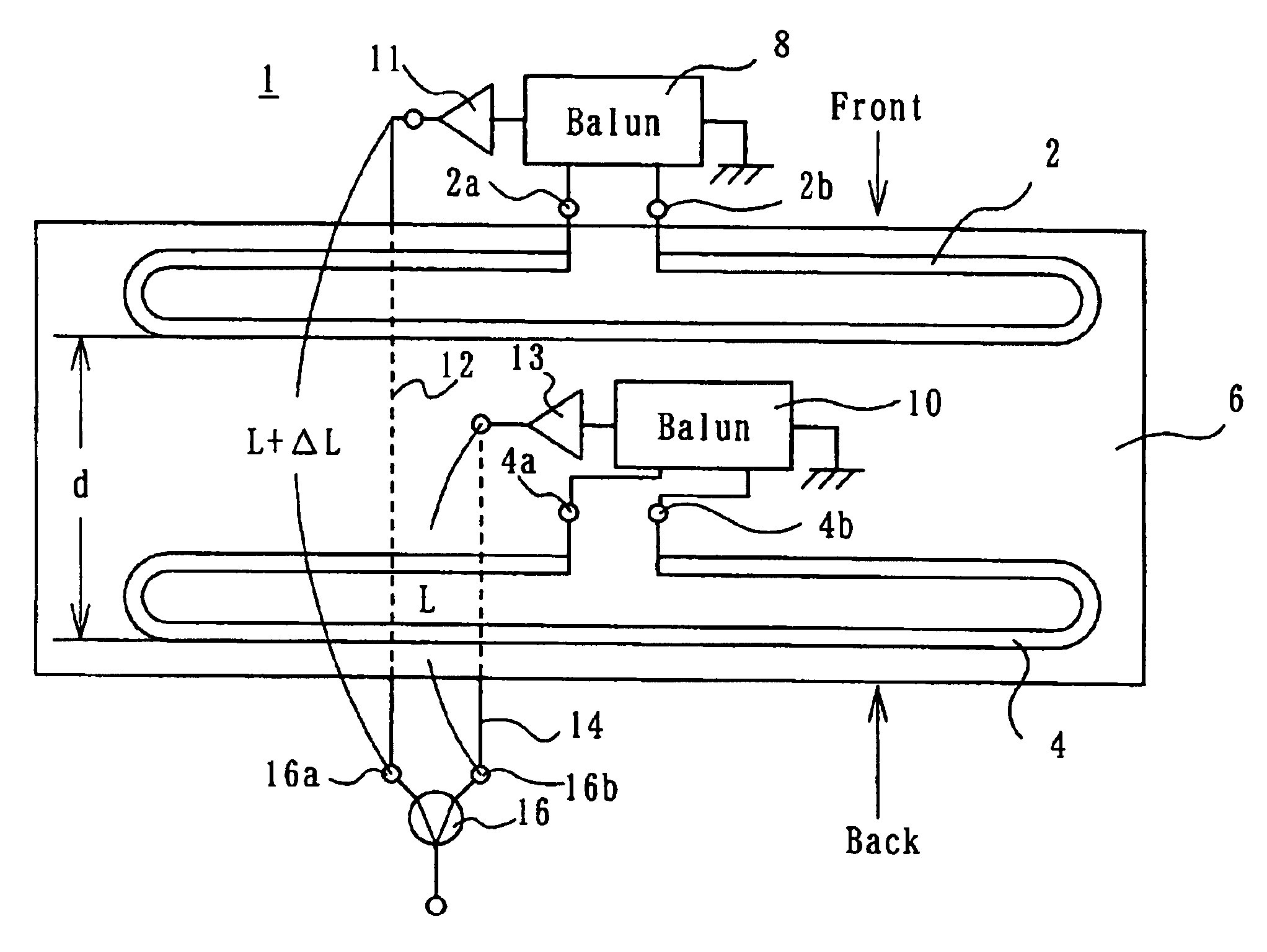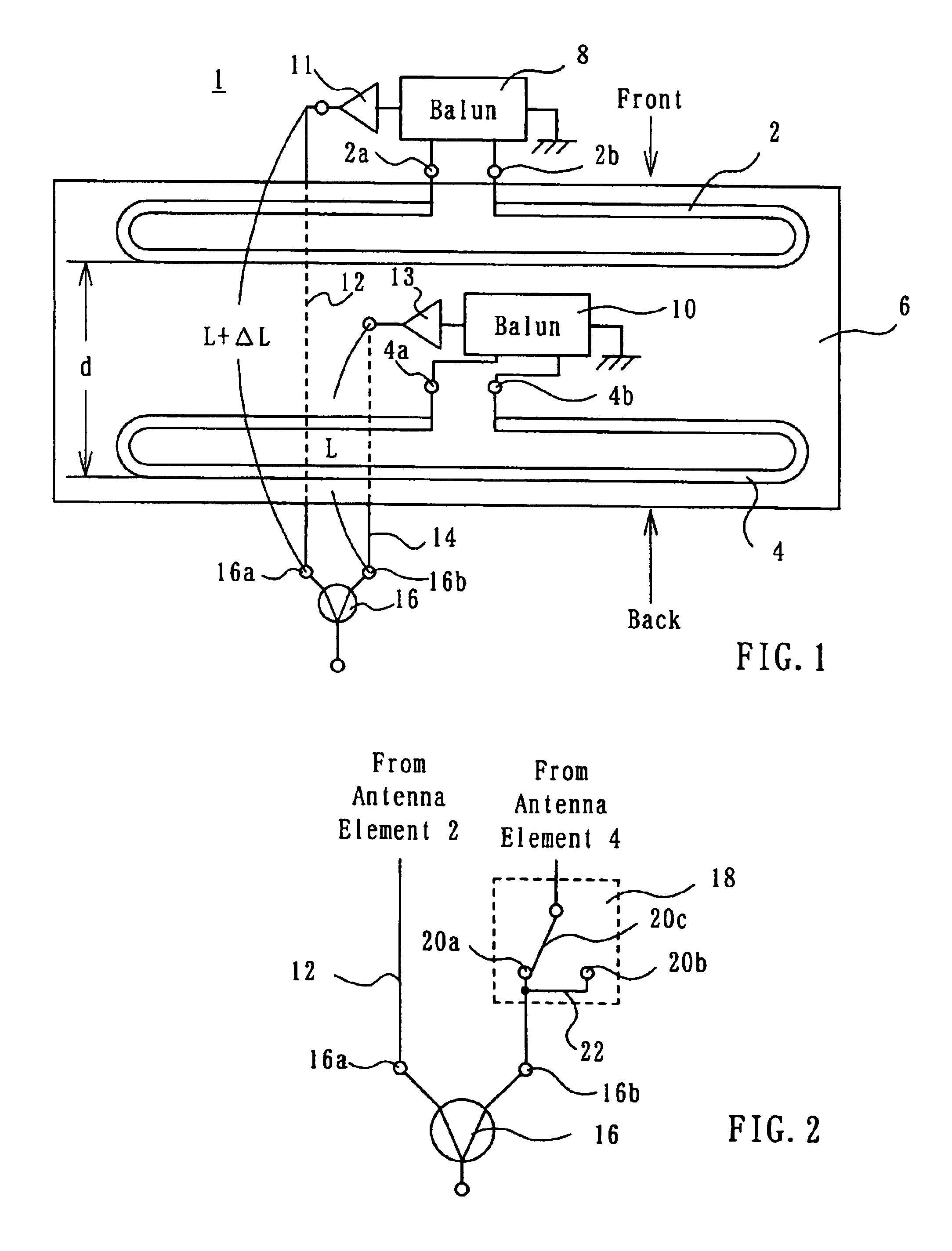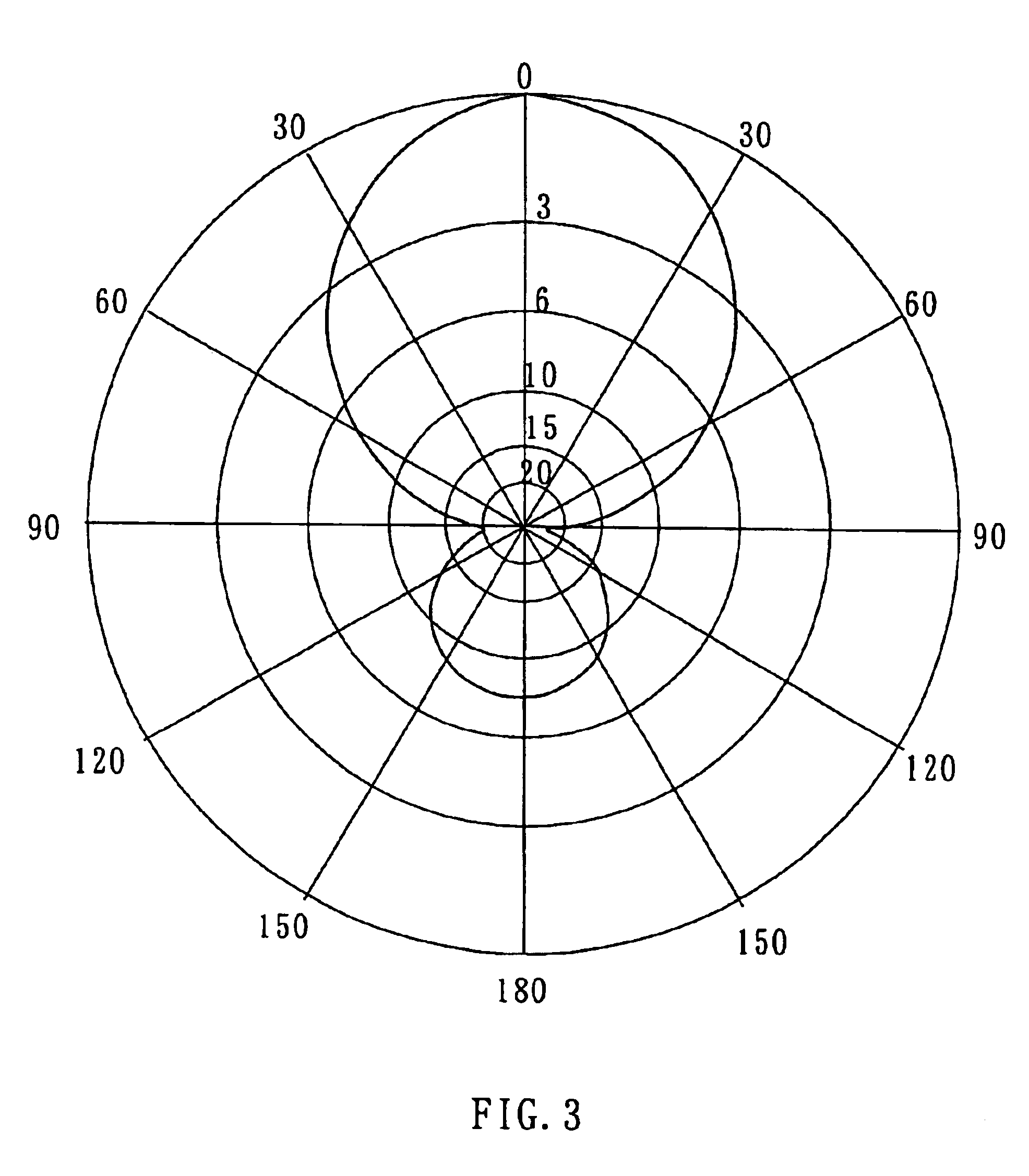Variable directivity antenna and variable directivity antenna system using such antennas
a technology of variable directivity and antenna system, which is applied in the direction of antennas, antenna feed intermediates, electrical devices, etc., can solve the problem of not receiving well radio waves from other directions
- Summary
- Abstract
- Description
- Claims
- Application Information
AI Technical Summary
Benefits of technology
Problems solved by technology
Method used
Image
Examples
first embodiment
[0036]A variable directivity antenna 1 according to the present invention may be used to receive a radio wave in a first frequency band, e.g. in the UHF band (470-890 MHz) used for television broadcasting. As shown in FIG. 1, the antenna 1 has plural, e.g. two, antenna elements 2 and 4. The antenna elements 2 and 4 are folded dipole antennas of which the entire length is, for example, about 20 cm that is equal to about one-half of the wavelength λ at the center frequency, 620 MHz, of the UHF band. The two antenna elements 2 and 4 are disposed in parallel with each other with a predetermined distance d disposed therebetween. The distance d may be, for example, 20 mm, that is equal to about λ / 20. The antenna elements 2 and 4 are planar type elements that are formed by etching a metal film on a printed circuit board 6.
[0037]Feeding points 2a and 2b disposed in the center portion of the antenna element 2 are coupled to a matching device, for example, a balun 8. Similarly, feeding points...
second embodiment
[0080]The antenna 1 shown in FIG. 1 is arranged such that the received signals from the antenna elements 2 and 4 are coupled in phase with each other to the baluns 8 and 10, that the length of the feeder 12 is longer by ΔL than the feeder 14 to provide a delay, and that the variable phase device 18 is used. Alternatively, as shown in FIG. 16, the received signal from the antenna element 2 may be coupled to the balun 8 with a phase opposite to the phase of the received signal coupled from the antenna element 4 to the balun 10, with the feeder 14 longer by ΔL than the feeder 12 used to provide a delay as represented by a delay element 150, and with the variable phase device 18 connected in the succeeding stage of the delay element 150. The same modification may be done to the variable directivity antenna shown in FIG. 6.
third embodiment
[0081]The antenna system uses two antennas 30a and 30b, but the number is not limited to two, and a larger number of antennas may be used. Furthermore, instead of using dipole antennas as the antennas 30a and 30b, folded dipole antennas as used in the antenna 1 shown in FIG. 1 may be employed.
PUM
 Login to View More
Login to View More Abstract
Description
Claims
Application Information
 Login to View More
Login to View More - R&D
- Intellectual Property
- Life Sciences
- Materials
- Tech Scout
- Unparalleled Data Quality
- Higher Quality Content
- 60% Fewer Hallucinations
Browse by: Latest US Patents, China's latest patents, Technical Efficacy Thesaurus, Application Domain, Technology Topic, Popular Technical Reports.
© 2025 PatSnap. All rights reserved.Legal|Privacy policy|Modern Slavery Act Transparency Statement|Sitemap|About US| Contact US: help@patsnap.com



